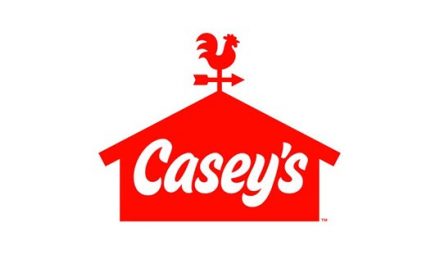Oil in a Bear Market
- Prices down 20% since February
- OPEC output cut harmed by internal challenges
- Asian crude oil demand under pressure
- Natural gas rig count 100 units more than last year
 Sincerely,
Alan Levine, Chairman of Powerhouse
Sincerely,
Alan Levine, Chairman of Powerhouse

The Matrix
Market observers have declared a bear market in oil markets. One measure of a bear market is a drop of 20% from recent highs. The Wall Street Journal noted, “Prices are down 20.6% since February 23, marking the sixth bear market for crude in four years and the first since August. Crude prices have lost 62% since settling at $115.06 a barrel three years ago.”
The decline validates the failure of the OPEC-non-OPEC production control agreement. The group’s ability to reduce output has been undercut by internal inconsistencies. Libya and Nigeria have been granted exceptions from limits because of military action that has cut into their normal production.
Libya is now producing more than 800,000 barrels daily for the first time since 2014 when civil war engulfed the country. Nigeria is repairing infrastructure damaged by militants in local incursions. Together, these countries have been enjoying unfettered production. This limits the value of output reductions by other members of the group.
Loss of Chinese demand is weighing on crude oil prices as well. In 2015, the government awarded import licenses to independent refineries. Product supplies became surplus as these facilities ramped up. And current oversupply will be met with reduced runs at Chinese refineries. Moreover, refinery maintenance at other plants this summer will contribute to a back-up of crude oil. In all, more than one million barrels daily of refining capacity are scheduled to be offline in the third quarter.
The other, more challenging problem for OPEC is the continuing success of shale oil production in the United States. U.S. production has continued to grow. The most recent data released by the Energy Information Administration (EIA) reached 9.350 million barrels per day, a recent high. As noted here, the Department of Energy (DOE) expects production to reach 10 million barrels daily in 2018.
Supply/Demand Balances
Supply/demand data in the United States for the week ending June 16, 2017, were released by the EIA.
Total commercial stocks of petroleum decreased 1.9 million barrels during the week ending June 16, 2017.
Builds were reported in stocks of distillates, propane and other oils. A draw was reported in stocks of gasoline, fuel ethanol, K-jet and residual fuels.
Commercial crude oil supplies in the United States decreased to 509.1 million barrels, a draw of 2.5 million barrels.
Crude oil supplies decreased in four of the five PAD Districts. PAD District 1 (East Coast) retreated 0.6 million barrels, PAD District 2 (Gulf Coast) crude oil stocks declined 2.2 million barrels, PAD District 4 (Rockies) crude oil stocks fell 0.4 million barrels and PAD District 5 (West Coast) crude stocks declined 0.2 million barrels from the previous report week. PAD District 3 (Gulf Coast) crude oil stocks rose 0.9 million barrels.
Cushing, Oklahoma, inventories decreased 1.1 million barrels from the previous report week to 61.1 million barrels.
Domestic crude oil production increased 20,000 barrels daily to 9.350 million barrels per day.
Crude oil imports averaged 7.876 million barrels per day, a daily decrease of 149,000 barrels. Exports fell 205,000 barrels daily to 0.517 million barrels per day.
Refineries used 94.0% of capacity, a decrease of 0.4 percentage points from the previous report week.
Crude oil inputs to refineries decreased 104,000 barrels daily. There were 17.152 million barrels per day of crude oil run to facilities. Gross inputs, which include blending stocks, fell 78,000 barrels daily to 17.494 million barrels daily.
Total petroleum product inventories saw an increase of 0.6 million barrels from the previous report week.
Gasoline stocks decreased 0.6 million barrels; total stocks are 241.9 million barrels.
Demand for gasoline rose 546,000 barrels per day to 9.816 million barrels daily.
Total product demand increased 1,553,000 barrels daily to 21.067 million barrels per day.
Distillate fuel oil supply grew 1.1 million barrels to 152.5 million barrels. National distillate demand was reported at 4.158 million barrels per day during the report week. This was a weekly increase of 113,000 barrels daily.
Propane stocks rose 1.8 million barrels; total stocks are 54.5 million barrels. Current demand is estimated at 986,000 barrels per day, an increase of 200,000 barrels daily from the previous report week.
Natural Gas
According to the EIA:
Net injections into storage totaled 61 Bcf, compared with the five-year (2012 – 2016) average net injection of 82 Bcf and last year’s net injections of 63 Bcf during the same week. This marks the first time since September 18, 2015, that the weekly net injections exceeded 100 Bcf.
After topping the 100 Bcf threshold five times in 2015 and a record 10 times in 2014, net injections never exceeded 82 Bcf in any week during 2016. Record levels of working gas in storage entering the 2016 refill season likely contributed to the unusually slow refill activity.
This is the first time in five weeks that net injections exceeded the five-year average. Working gas stocks total 2,770 Bcf, which is 207 Bcf more than the five-year average and 324 Bcf less than last year at this time.
According to Baker Hughes, for the week ending Friday, June 23, the natural gas rig count decreased by three to 183, which is almost 100 rigs more than last year at this time. The number of oil-directed rigs rose by 11 to 758. The total rig count increased by eight, and it now stands at 941.
Futures trading involves significant risk and is not suitable for everyone. Transactions in securities futures, commodity and index futures and options on future markets carry a high degree of risk. The amount of initial margin is small relative to the value of the futures contract, meaning that transactions are heavily “leveraged.” A relatively small market movement will have a proportionately larger impact on the funds you have deposited or will have to deposit—this may work against you as well as for you. You may sustain a total loss of initial margin funds and any additional funds deposited with the clearing firm to maintain your position. If the market moves against your position or margin levels are increased, you may be called upon to pay substantial additional funds on short notice to maintain your position. If you fail to comply with a request for additional funds within the time prescribed, your position may be liquidated at a loss and you will be liable for any resulting deficit. Past performance may not be indicative of future results. This is not an offer to invest in any investment program.
Powerhouse is a registered affiliate of Coquest, Inc.
Was this helpful? We’d like your feedback.
Please respond to [email protected].
Copyright © 2017 Powerhouse, All rights reserved.








